Habitat: open woodland, parks, gardens.
Favourite plants: comfrey, bramble, fruit trees, fuscia.
When to see: March–July.

Digital Content Manager
You can't help but smile when you catch sight of a bee, but do you know what species it is?
You might be surprised to learn there are more than 250 types of bee in the UK. Bumblebees, mason bees, mining bees - these are just one small part of a big, beautiful family. Take a look at how to identify some of our most common bee species.
There are 24 types of bumblebee in the UK. These clumsy balls of fluff are a social species, nesting in colonies of around 200 bees.
Here are four of our most common bumblebees.
Habitat: open woodland, parks, gardens.
Favourite plants: comfrey, bramble, fruit trees, fuscia.
When to see: March–July.
Easily identified by their ginger thorax, black abdomen and white tail, tree bumblebees are one of our most common species. They are also the species most likely to colonise nest boxes, and have adapted quickly to life in all manner of both urban and rural habitats since first arriving in the UK in 2001.
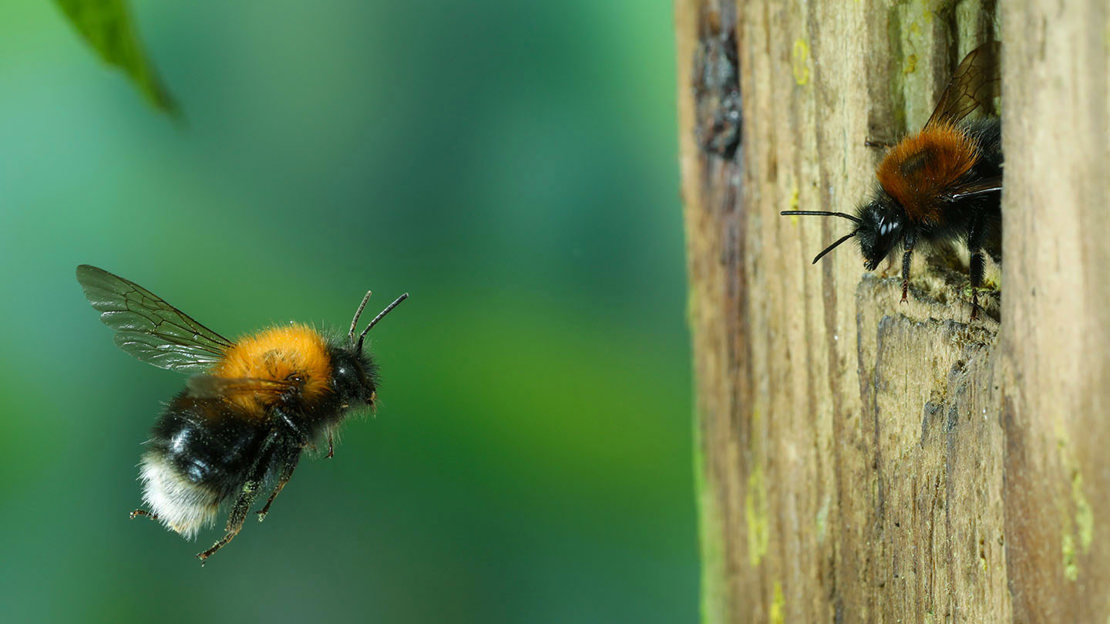
Habitat: woodlands, gardens, open countryside.
Favourite plants: thistles, bird's-foot trefoil, buddleia.
When to see: March–October.
Female red-tailed bumblebees are jet black with a bright red or red-orange tail, while males have a yellow-haired head and collar, a weak yellow midriff-band, and a red tail. These bees can be spotted anywhere they can find their favourite food plants, from parks and gardens to wildflower meadows. They tend to nest in old mammal burrows and hibernate in north-facing banks in open woodland.
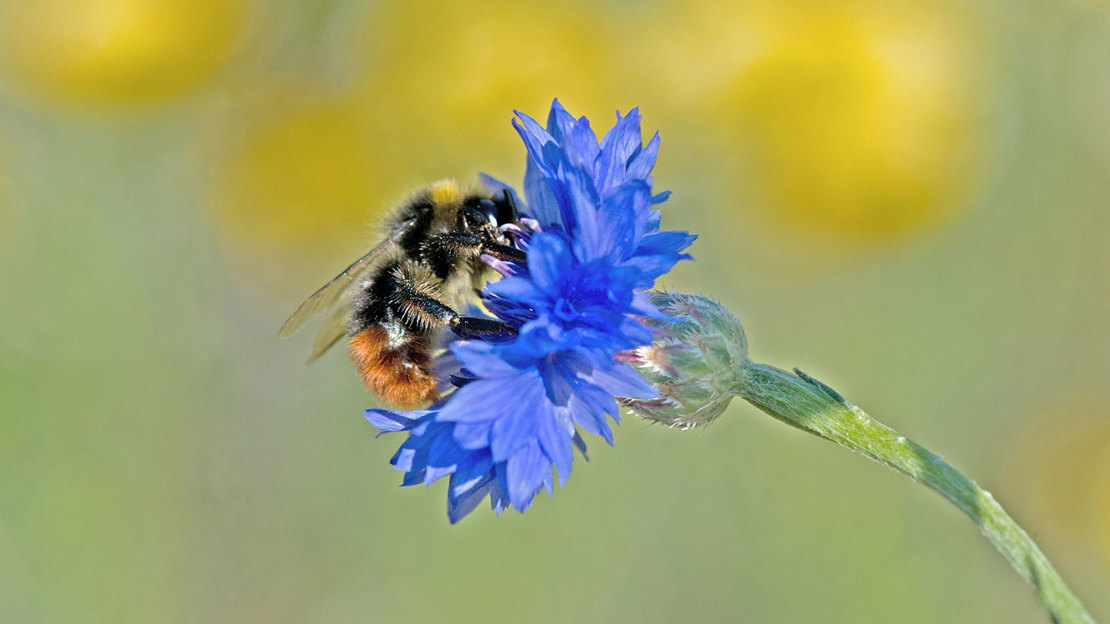
Habitat: woodland edges, gardens, farmland, heathland.
Favourite plants: sallow, blackthorn, gorse, dead-nettle.
When to see: March–October.
White-tailed bumblebees have a bright yellow collar, a yellow abdominal band and a bright white tail. They look very similar to buff-tailed bumblebees (which have a browner collar and an orange-tinted tail), and early bumblebees (much smaller, with a bright orange or yellow-orange tail).
White-tailed bumblebees can be found almost anywhere, feeding on a diverse range of flowers.
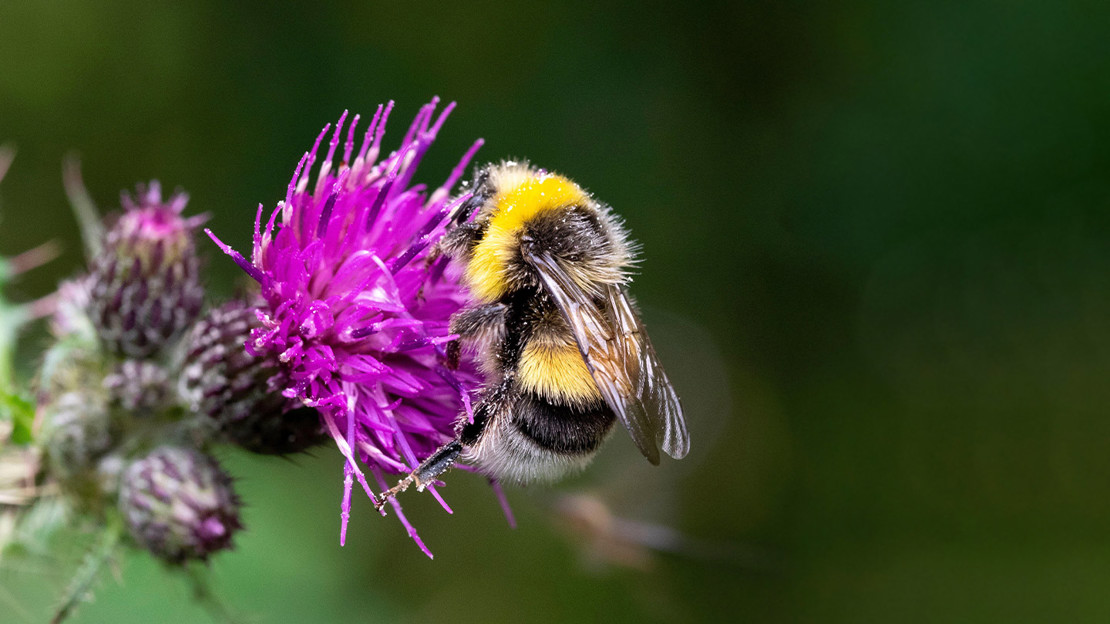
Habitat: woodlands, gardens, heathland, parks.
Favourite plants: bluebell, clover, knapweed, scabious, comfrey, dandelion.
When to see: March–November.
These beautiful little bees are the only UK species with all-brown colouring and no white tail. They range from ginger to a pale, sandy brown, depending on how sun-bleached they are.
Common carder bees are very common and are found everywhere from arable land to urban gardens. They have the longest flight period of any of our bumblebees and likely have two generations per year.
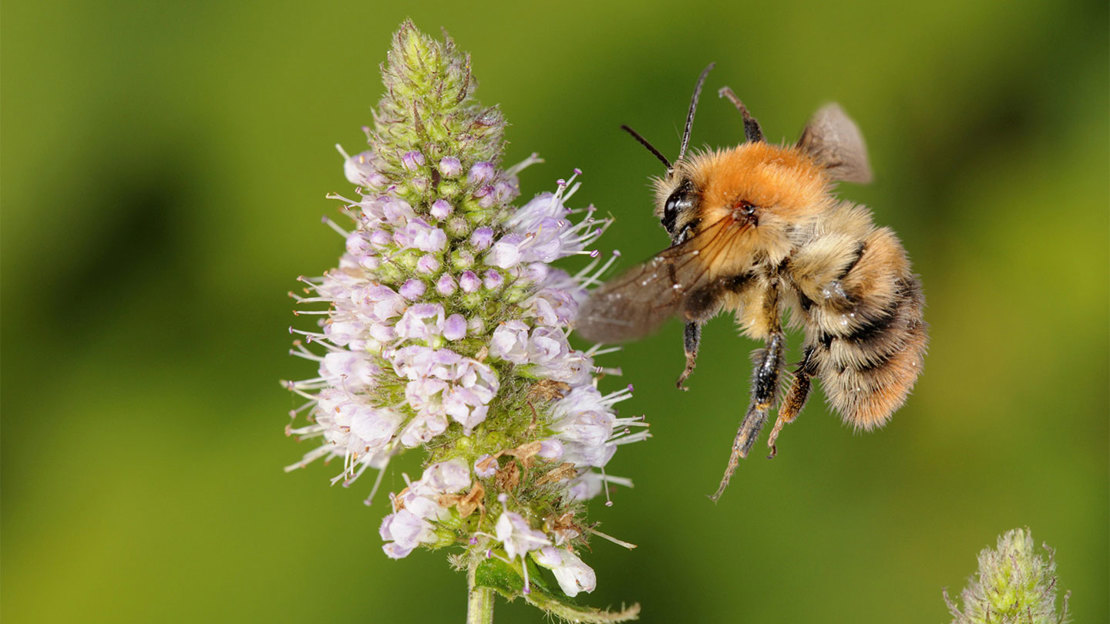
Habitat: woodlands, gardens, parks, orchards, meadows.
Favourite plants: willow, ivy, lavender, dandelion, clover, thyme.
When to see: March–September.
We have just one species of honey bee in the UK. It's a domesticated species introduced by bee keepers - it's now incredible rare to find our native wild honey bee species in the UK.
Honey bees are easily recognised by their slim, sandy thorax and black abdomen with golden-amber bands. They live in hives of up to 20,000 individuals, and are commonly found feeding on open flowers they can easily reach with their short tongues, including those of trees, herbs and shrubs.
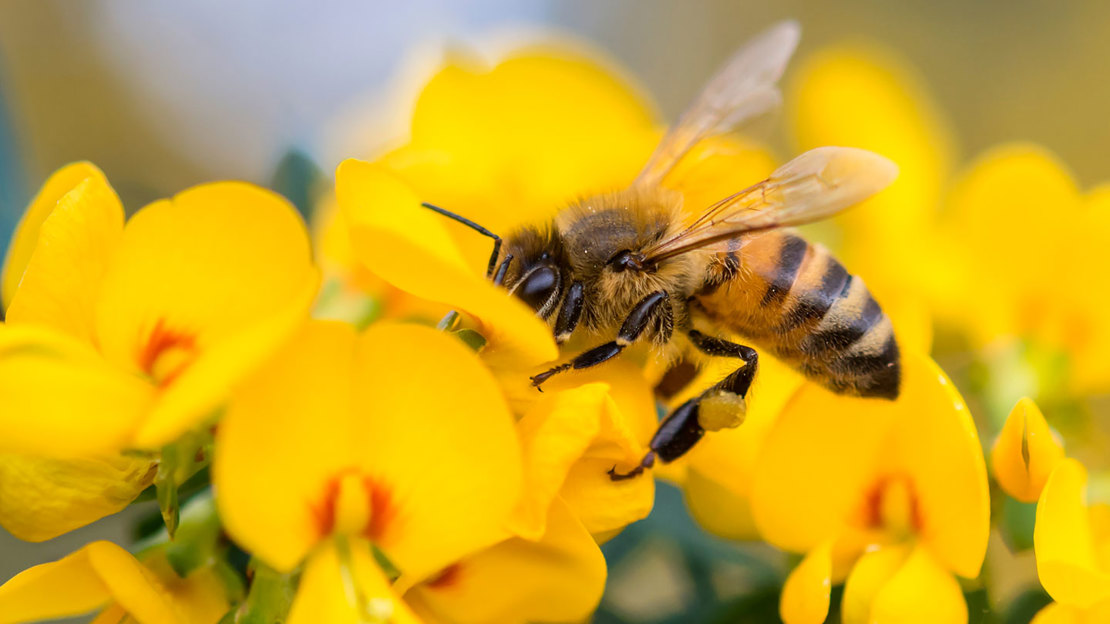
Around 90% of UK bee species are solitary bees – a huge group that includes mason bees, mining bees, leaf-cutter bees and countless more. Some can be hard to identify, so let's take a look at some of the more distinctive and common types of solitary bee in the UK.
Habitat: gardens, parks, orchards, urban environments.
Favourite plants: apple, pear, dandelion, sallow.
When to see: April–June.
These bees look similar to some mining bee species, but you can tell them apart by their boxy heads and large, powerful jaws. They have a black head, brown thorax and orange abdomen, and in females, a lot of fluff!
You're likely to see red mason bees in built-up environments, and they're the bee most likely to be tucked up in your bee hotel.
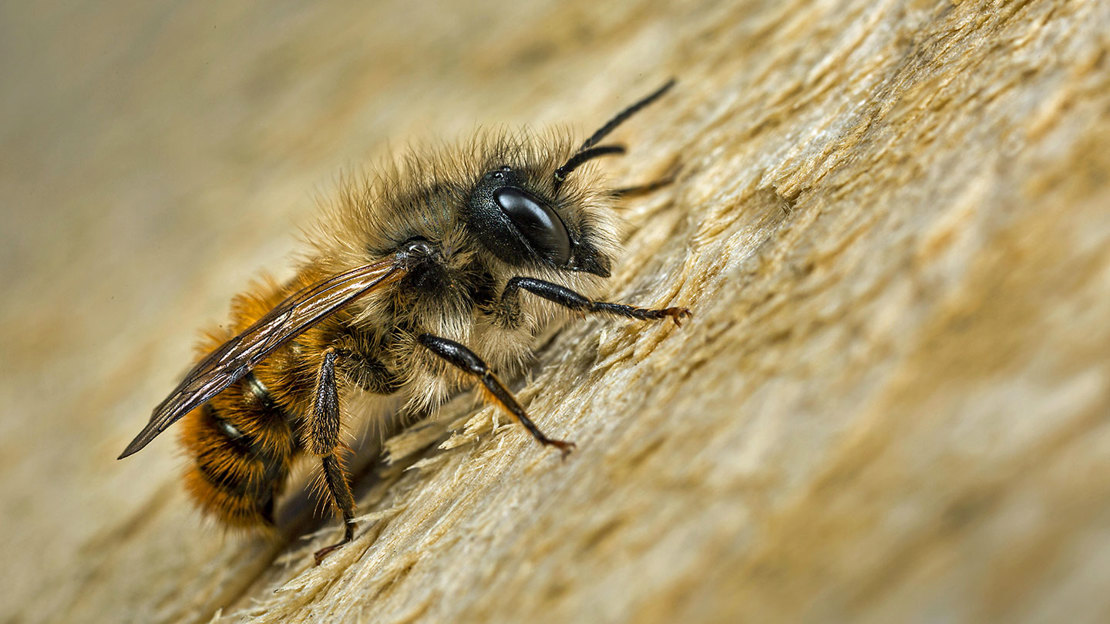
Habitat: gardens, parks, south-facing embankments.
Favourite plants: buttercup, dandelion, hawthorn, blackthorn, willow, fruit trees.
When to see: March–June.
There is no mistaking the tawny mining bee: a honey bee-sized ginger species with a thick orange coat and a black face. These bees feast on a range of shrubs and are found in a wide variety of habitats. From gardens to parks, if there is an area of light soil where they can nest, you're likely to spot one.
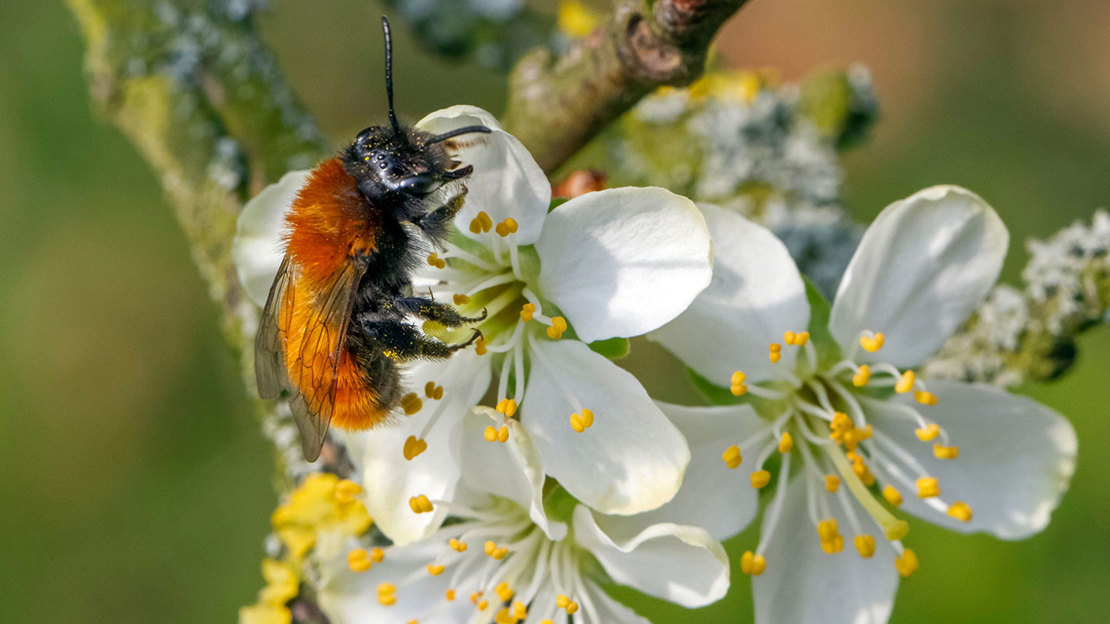
Habitat: open woodland, gardens, river banks, urban environments.
Favourite plants: buttercup, hawthorn, dandelion, blackthorn, gorse, fruit trees.
When to see: March–June.
A stunning mining bee with monochrome stripes. Like tawny mining bees, ashy mining bees nest in tunnels underground, often in gardens. They leave a volcano-like mound of earth behind as they excavate, and are known to close this entrance over once they've finished foraging for the day, or if it starts raining.
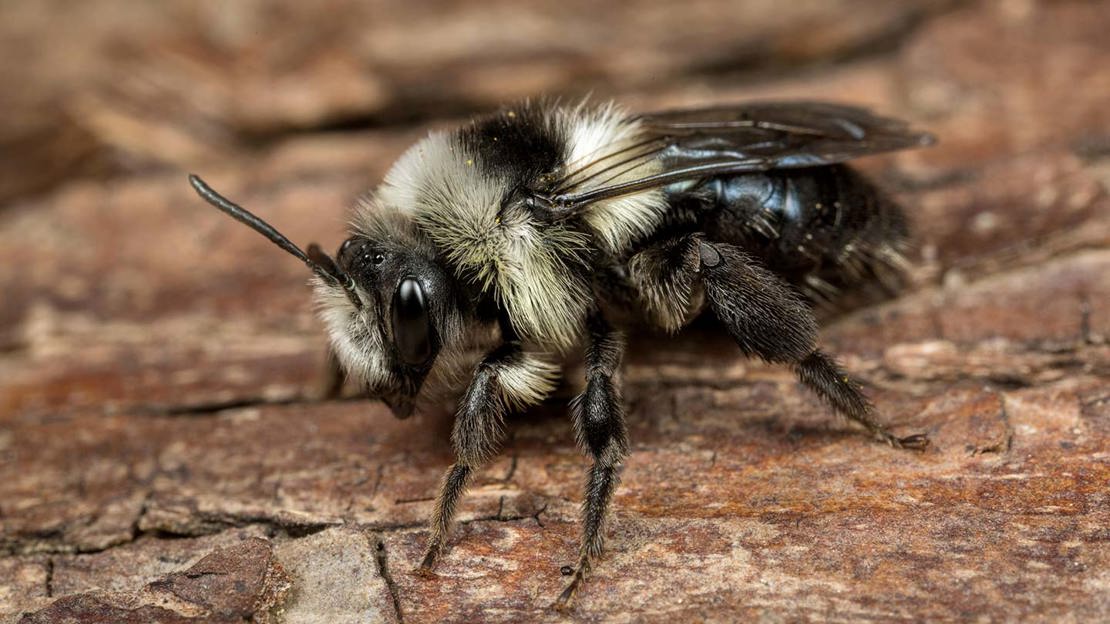
Habitat: woodland edges, farmland, scrub, gardens, meadows.
Favourite plants: hawthorn, dandelion, blackthorn, buttercup, sallow.
When to see: March–June
As their name suggests, early mining bees are one of the earliest bees to emerge in spring. Females are easily recognised by their foxy-coloured thorax, the dusting of light hairs on their legs, and the tuft of orange hairs at the tip of their black abdomen. They nest in holes in light soils on south-facing banks.
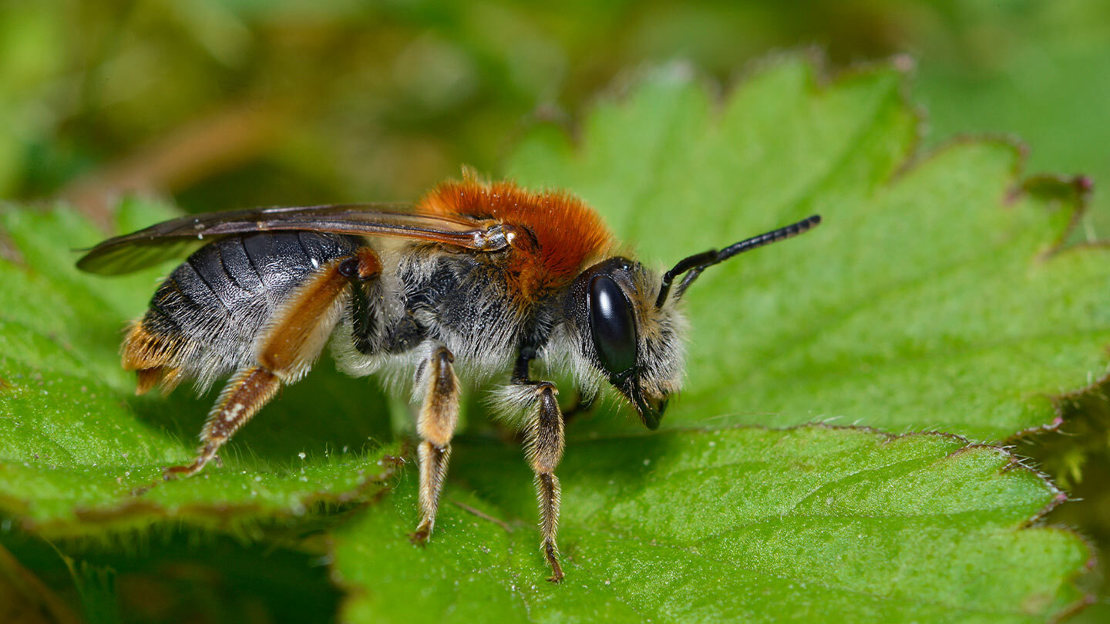
Habitat: woodlands, parks, gardens, urban green spaces.
Favourite plants: lungwort, primrose, dead-nettle, comfrey.
When to see: February–June
Often confused for small bumblebees, but their quick, darting flight sets them apart. Male and female hairy-footed flower bees have distinctive differences, too. Males are ginger-brown in colour, with cream-coloured hair on their faces and the hairy feet which earned this species its name. Females lack these comical hairs and are black all over, with red-orange hairs on their hind legs.
Hairy-footed flower bees are mostly found in the south and east, though records from northern England are increasing, perhaps due to climate change.
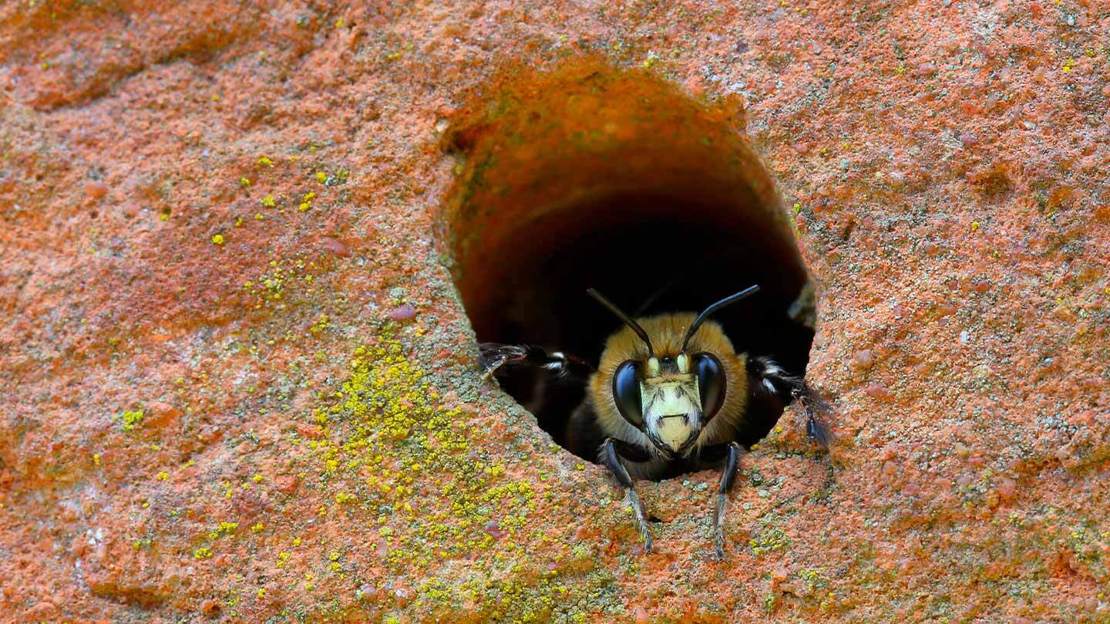
Habitat: gardens, parks, coast.
Favourite plants: knapweed, thistles, bramble, burdock.
When to see: June–September.
Found in lots of different habitats but particularly common in gardens, where they cut neat semicircles out of leaves belonging to roses, willowherbs, honeysuckle, lilac, birch, ash and horse chestnut. They take these leaves to their nesting tunnels to line and seal each cell.
Patchwork leafcutter bees make their nests in natural tunnels like bramble stems and dead wood, but also use man-made structures including bee hotels, bee bricks and holes in walls.
Patchwork leafcutter bees are our most common leafcutter, and are easily recognised by the bright orange pollen brush which extends the whole length of the underside of their abdomen.
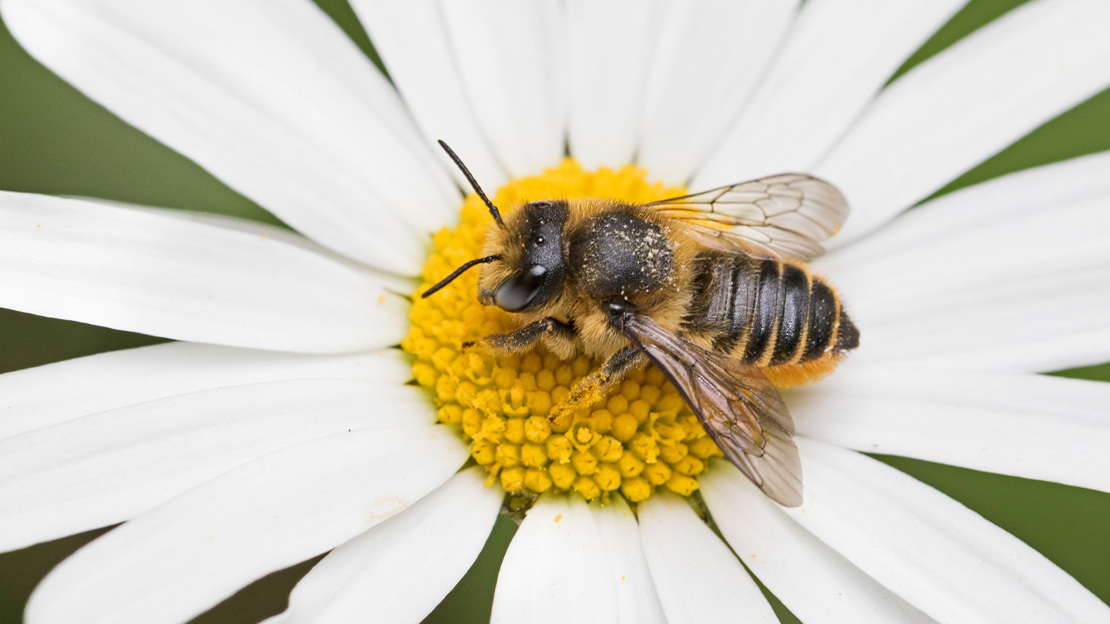
Habitat: woodland rides, gardens, chalk downland, soft cliff areas.
Favourite plants: lamb’s ear, vetches, bird’s-foot trefoil.
When to see: May–August.
Wool carder bees are one of the few types of bees in the UK where the male is larger than the female, and they have an attitude to match. Males will fiercely guard a patch of flowers for their mate and will often crush a trespasser to death with spikes on their abdomen! Female wool carder bees live a more wholesome life, collecting soft wool fibres from plants like lamb’s ear and yarrow to line their nest cavities in hollow stems, dead wood and man-made structures.
Both male and female wool carder bees have yellow spots down each side of their abdomen. As well as being smaller than the males, the females are darker and less hairy.
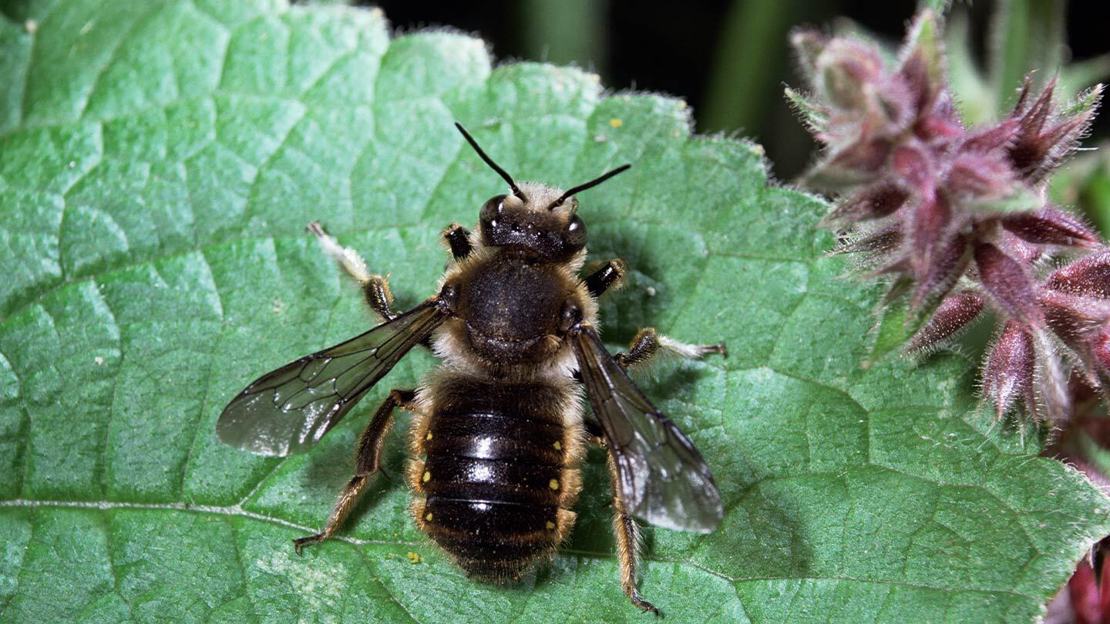
Habitat: urban environments, farmland, coastal areas, heathland.
Favourite plants: ivy, other late blooming flowers.
When to see: August–November
Like tree bumblebees, ivy bees are newcomers to the UK, first spotted here in 2001. Unusually, they're an autumn bee, first emerging in late August. As their name suggests, this is to coincide with the flowering of their main foodplant, ivy.
Ivy bees look a little like honey bees, but their thorax is a bright orange colour and the stripes on their abdomen are more clearly defined and a brighter yellow.
Male ivy bees emerge around a month before the females. When the females do leave their nest holes, males gather at the entrance and begin a fierce competition to mate. Multiple male ivy bees often target the same female and become entangled in a frenzied 'mating ball'.
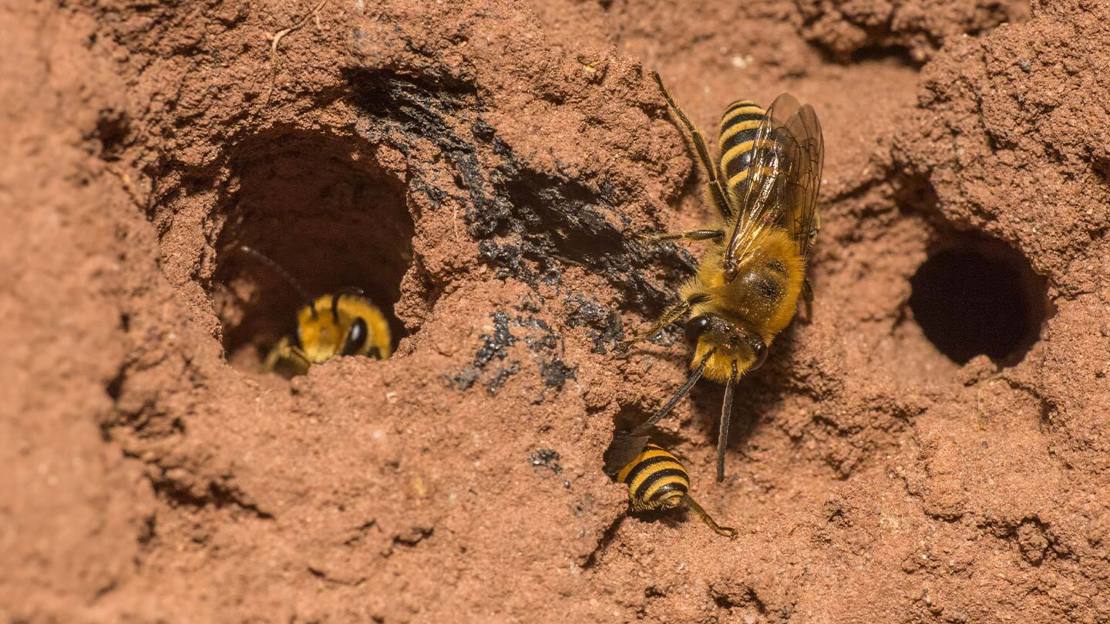
Habitat: woodland, gardens, urban environments, coastal cliffs.
Favourite plants: dandelion, buttercup, forget-me-not, cow parsley, greater stitchwort.
When to see: April–June.
Nomad bees are the cuckoos of the insect world, laying their eggs inside the nests of mining bees. Gooden’s nomad bee is one of the most common, with a wasp-like appearance and orange legs. It tends to target nests of the buffish mining bee, grey-patched mining bee and cliff mining bee.
Once the nomad bee larva has hatched and goes through its first moult, its sickle-shaped mouthparts are strong and powerful enough to destroy the host bee’s egg or grub. The nomad larva then consumes the bee’s pollen store and goes through its lifecycle in the host’s nest.
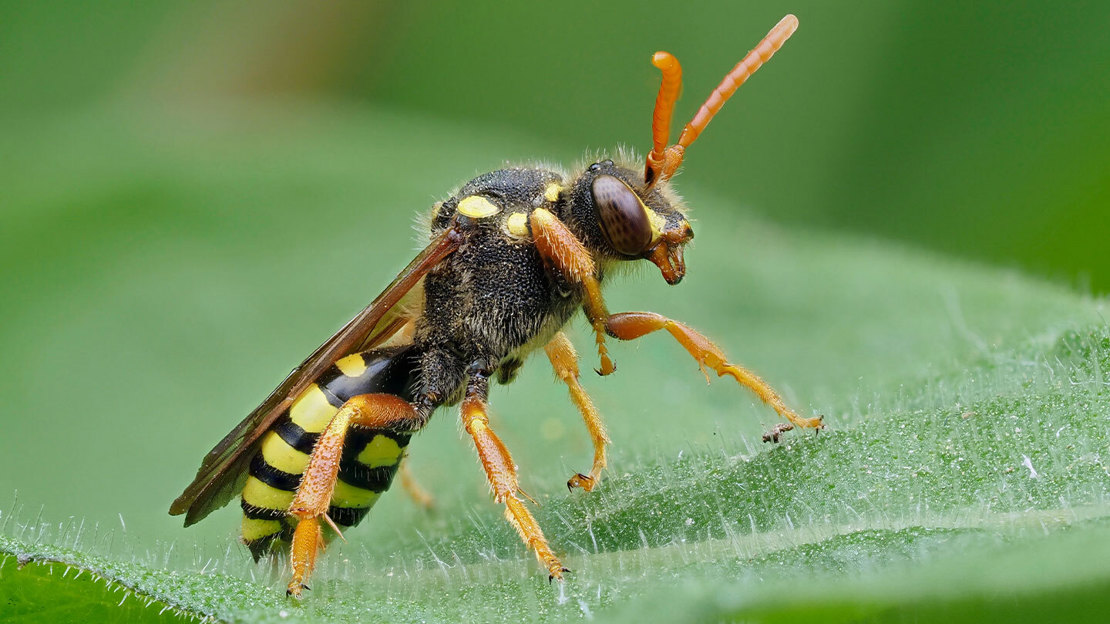
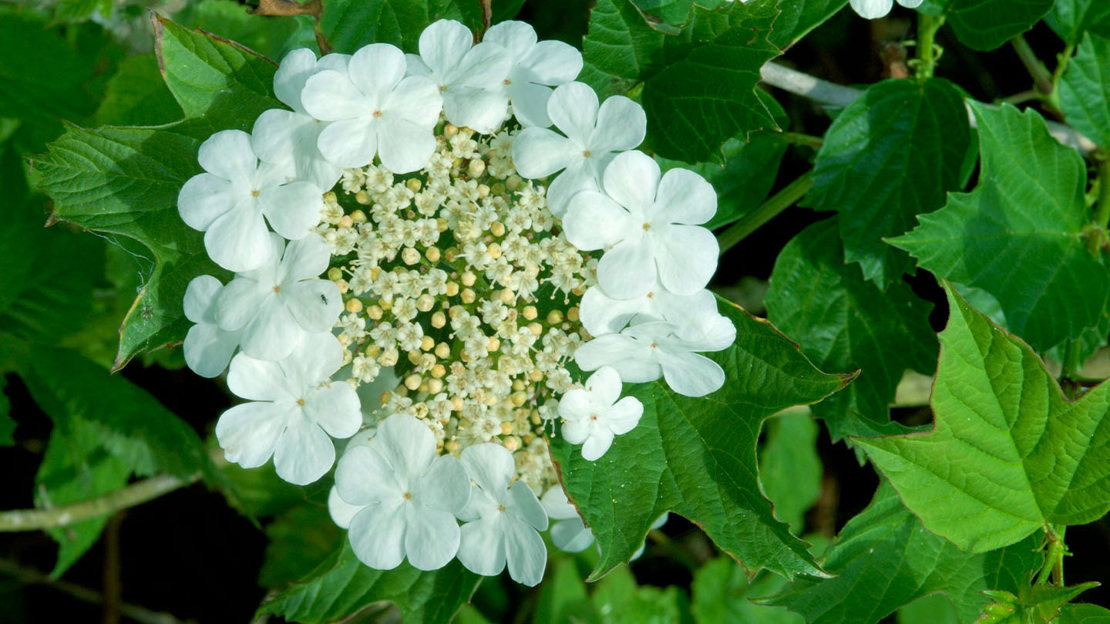
With our essential Trees for Bees pack you can create a wildlife haven for bees and other pollinators. Each pack includes a mix of nectar-giving native tree species.
Buy the pack